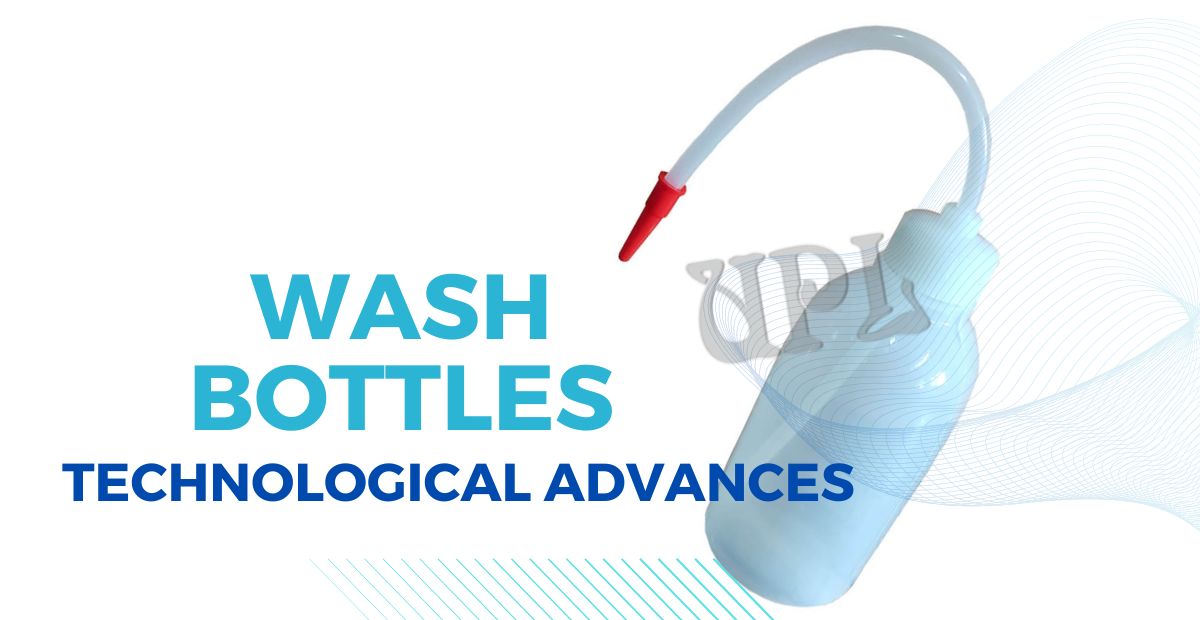The wash bottle has been a staple in laboratories and industrial settings for decades. This simple yet essential tool, used for rinsing and cleaning, has traditionally been a basic plastic container with a nozzle. However, as technology continues to advance at a rapid pace, even the most fundamental laboratory equipment is not immune to innovation. In this blog, we’ll explore the exciting technological advances in wash bottles, delving into smart features that are revolutionizing their functionality and examining future trends that promise to transform these indispensable tools.
The Evolution of Wash Bottles
Before we dive into the cutting-edge developments, let’s briefly recap the evolution of wash bottles. Originally, wash bottles were simple glass containers with a stopper and a glass tube for dispensing liquid. As plastics became more prevalent, polyethylene squeeze bottles became the norm, offering improved durability and ease of use. These basic designs have served scientists and technicians well for years, but now we’re on the cusp of a new era in wash bottle technology.
Smart Features Revolutionizing Wash Bottles
Precision Dispensing Systems
One of the most significant advancements in wash bottle technology is the integration of precision dispensing systems. These smart wash bottles can dispense exact volumes of liquid, eliminating guesswork and reducing waste. Some models feature digital displays that allow users to set and monitor the amount of liquid dispensed, ensuring consistency across experiments or cleaning processes.
Temperature Control
Temperature-controlled wash bottles are emerging as a game-changer in laboratories where precise temperature management is crucial. These innovative devices can maintain a specific liquid temperature, which is particularly useful in biological research or chemical processes where temperature sensitivity is a factor. Some advanced models even offer programmable temperature settings for different applications.
Contamination Detection
Cutting-edge wash bottles are now being equipped with contamination detection systems. These smart bottles use sensors to detect impurities or unwanted substances in the liquid, alerting users to potential contamination issues. This feature is especially valuable in sterile environments or when working with sensitive materials.
Future Trends in Wash Bottle Technology
As we look to the future, several exciting trends are emerging in wash bottle technology:
Voice-Activated Controls
Imagine being able to control your wash bottle with voice commands. This hands-free operation could be particularly useful in situations where manual manipulation is difficult or when working in sterile environments.
Self-Cleaning Capabilities
Future wash bottles might incorporate self-cleaning technologies, such as UV sterilization or automated flushing systems. This would ensure that the bottles themselves remain free from contamination, reducing the risk of cross-contamination between uses.
Sustainable Materials and Designs
As environmental concerns continue to grow, we can expect to see wash bottles made from more sustainable materials. Biodegradable plastics or recycled materials could become the norm, with designs focused on reducing waste and improving recyclability.
Augmented Reality Interfaces
AR technology could be used to provide real-time information about the wash bottle’s contents, usage instructions, or safety warnings. This could be particularly useful in training scenarios or when working with hazardous materials.
The wash bottle is undergoing a remarkable transformation, evolving from a simple plastic container into a sophisticated, connected device. As we’ve explored, technological advances are bringing precision, efficiency, and new capabilities to this essential laboratory tool. From smart dispensing systems to contamination detection and beyond, these innovations promise to enhance accuracy, safety, and productivity in scientific and industrial settings.
As we look to the future, the potential for further advancements in wash bottle technology is truly exciting. Voice activation, self-cleaning capabilities, and AI integration are just a few of the possibilities on the horizon. While challenges remain, particularly in terms of cost and implementation, the trajectory is clear: the wash bottle of tomorrow will be a far cry from its simple predecessor.
For scientists, researchers, and industrial users, staying informed about these technological advances in wash bottles is crucial. As these smart features become more prevalent, they have the potential to significantly impact laboratory processes and outcomes. The future of wash bottles is smart, connected, and full of possibilities – a testament to how even the most basic tools can be transformed by the relentless march of technology.






